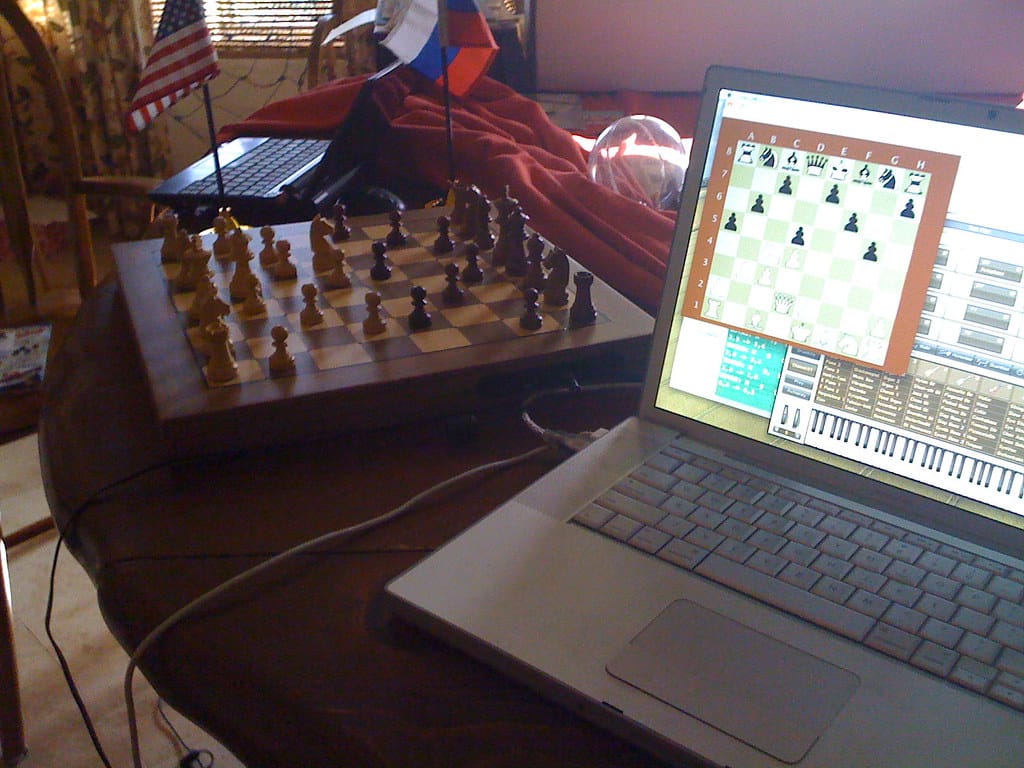

- #Play chess against computer install#
- #Play chess against computer full#
- #Play chess against computer code#
Turing described his own algorithm as being able to play a low-level game of chess. Placing the king in check could be attributed a half a point for example. For example, if a knight is worth 3 points and a queen is worth 10, the algorithm will vote for the move that earns the most points in the short run. This evaluation algorithm is primarily centered around deciding whether to take a piece or not. Turing’s Turochamp works by taking in the adversarial player’s move as input and calculating all of the possible moves, as well as the player responses, and attributing points based on the moves. Of course, these values can vary depending on the position: Bishops and knights have usually attributed 3 points, rooks are worth 5 points and the queen is worth 10 points conventionally. One centipawn is 1/100th of a pawn, which is usually worth one point in chess. The score is usually calculated in centipawns. Positive values mean a position is better for the white pieces, and negative values indicate the position is better for the black pieces. In the graph below, we can see a graph of the score attributed to a position. Using this, we can have an idea of who is winning at which point in the game. Taken together, our results suggest that there is substantial promise in designing artificial intelligence systems with human collaboration in mind by first accurately modeling granular human decision-making.We can visualize evaluations and much more using Python and a simple chess package. For a dual task of predicting whether a human will make a large mistake on the next move, we develop a deep neural network that significantly outperforms competitive baselines. We develop and introduce Maia, a customized version of Alpha-Zero trained on human chess games, that predicts human moves at a much higher accuracy than existing engines, and can achieve maximum accuracy when predicting decisions made by players at a specific skill level in a tuneable way. Applying existing chess engines to this data, including an open-source implementation of AlphaZero, we find that they do not predict human moves well. The hundreds of millions of games played online by players at every skill level form a rich source of data in which these decisions, and their exact context, are recorded in minute detail. Bullet, blitz and rapid game start every second, so come join the fun Chess. The aggregate performance of a chess player unfolds as they make decisions over the course of a game. Find a challenging opponent instantly or play against the computer on chess24. We pursue this goal in a model system with a long history in artificial intelligence: chess. A crucial step in bridging this gap between human and artificial intelligence is modeling the granular actions that constitute human behavior, rather than simply matching aggregate human performance. However, the ways in which AI systems approach problems are often different from the ways people do, and thus may be uninterpretable and hard to learn from. There are plenty places to play chess against a human opponent, but a simple chess playing computer didn't seem to exist.

#Play chess against computer install#
I didn't want to install anything on my computer and I didn't want to install the Flash plugin.
#Play chess against computer code#
The code for training Maia can be found on our Github Repo.Īs artificial intelligence becomes increasingly intelligent-in some cases, achieving superhuman performance-there is growing potential for humans to learn from and collaborate with algorithms. I wanted to play a quick game of chess online against the computer.

If you want to see some more examples of Maia's predictions we have a tool here to see where the different models disagree. If you want to be the first to know, you can sign up for our email list here. We are going to be releasing beta versions of learning tools, teaching aids, and experiments based on Maia (analyses of your games, personalized puzzles, Turing tests, etc.). You can read a blog post about Maia from the Computational Social Science Lab or Microsoft Research.
#Play chess against computer full#
Read the full research paper on Maia, which was published in the 2020 ACM SIGKDD International Conference on Knowledge Discovery and Data Mining (KDD 2020).


 0 kommentar(er)
0 kommentar(er)
